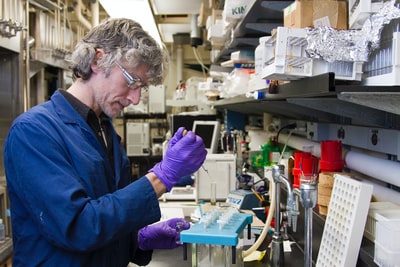Antibiotics are used to treat bacterial infections and work by causing the osmotic lysis in the cell.
- Mutations in bacteria DNA can lead to antibiotic resistance.
- Useful characteristics as a result of a mutation, like antibiotic resistance, will survive and be spread to the next generation.
- Bacteria can pass on their gene by vertical gene transmission, which involves asexual reproduction, or horizontal gene transmission, which involves conjugation.
- Antibiotic resistant bacteria, like TB and MRSA, can evolve faster than drug companies can produce antibiotics to deal with them.
Looking around it’s clear to see that life on Earth is very varied. The similarities and differences are not only apparent phenotypically (on the outside) but also biochemically and through cellular organisation.
——————————————————
The Variety of Life : Haemoglobin

Each haem group has an iron ion to which one molecule of oxygen can bind. This means that at any one time one haemoglobin molecule can carry four molecules of oxygen. Due to the presence of iron, it’s the haem group which gives haemoglobin its colour: bright red when combined with oxygen and purple otherwise.
The main function of haemoglobin is to carry oxygen from the alveoli in the lungs to the cells in the rest of the body. It’s able to drop the oxygen off where need by dissociation which is most clearly represented in a graph.
As you can see, at low oxygen partial pressures the haemoglobin oxygen-saturation is very low. However, as the partial pressures of oxygen increase so does the oxygen-saturation of haemoglobin.
The S-shape of the curve can be explained as follows. One haemoglobin molecule is formed of four haem groups. When an oxygen molecule combines with one of the haem groups the haemoglobins affinity for oxygen increases. This means that it’s easier for the second molecule to bind which in turn makes it easier for the third to bind. However, when the third oxygen molecule binds this makes it harder for the fourth. This is why the line of the graph rises slowly, increases, and then slows down again.
 Antibiotics are used to treat bacterial infections and work by causing the osmotic lysis in the cell.
Antibiotics are used to treat bacterial infections and work by causing the osmotic lysis in the cell.